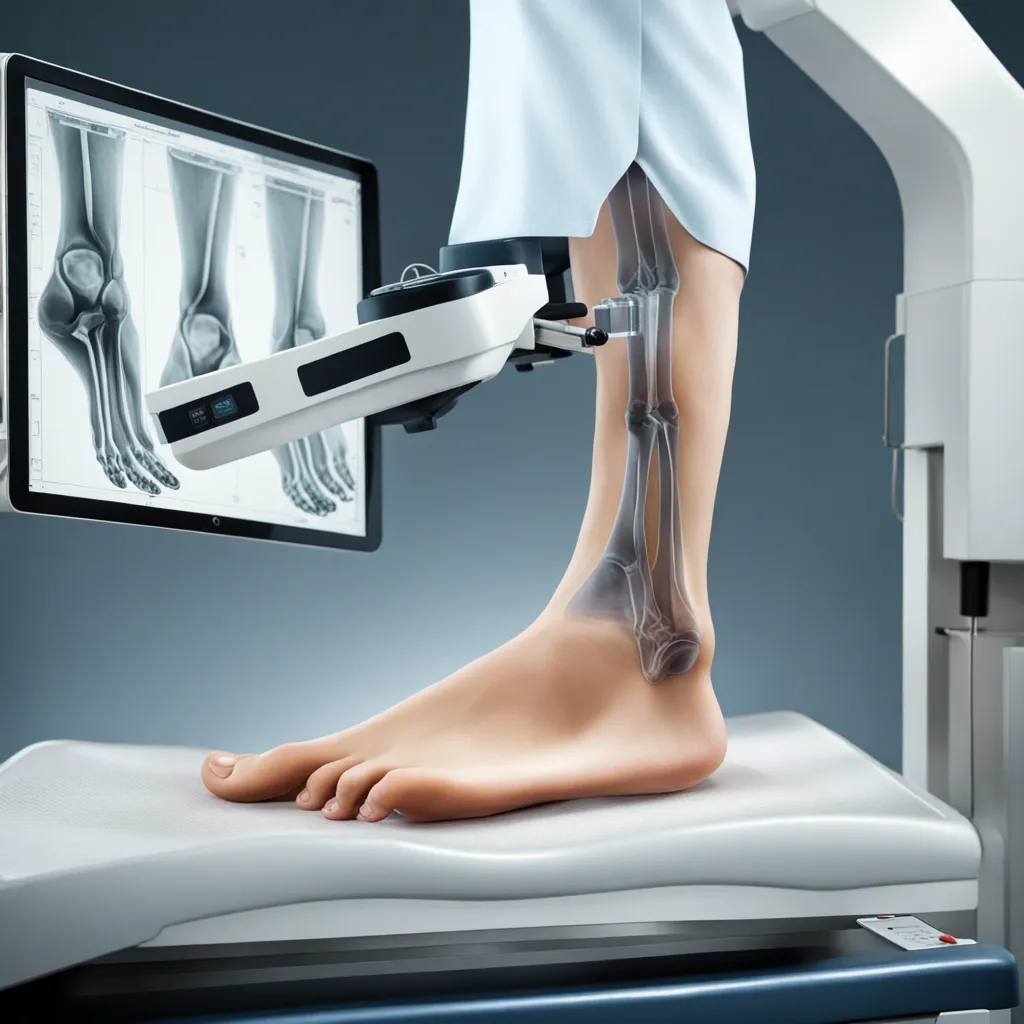Diabetic Foot Care
Diabetic Foot Care in Costa Mesa — Protect Your Mobility, Prevent Complications
Living with diabetes means extra vigilance for your foot health. At California Podiatry Associates, our goal is to help people with diabetes maintain strong, healthy feet and avoid serious complications. From neuropathy to wounds, our expert podiatrists take a comprehensive, proactive approach to diabetic foot care — because every step matters.
What we offer
Expert care for diabetic foot complications
We conduct thorough foot evaluations to identify early signs of diabetic foot complications and develop personalized treatment plans.
We provide advanced wound care to promote healing and prevent infections in diabetic patients.
We develop custom orthotics to relieve pressure on your feet and prevent foot complications in diabetic patients.
We provide patient education on proper foot care and lifestyle changes to help manage diabetes symptoms and prevent complications.
Why choose us
Expert care for your foot health

Years of experience
Expert team
Awards
1/ Comprehensive Foot Care
2/ Experienced Podiatrists
3/ State-of-the-Art Facilities
4/ Patient-Centered Approach
Selected project
Our Patients' Success Stories
Why Diabetic Foot Care Is So Critical
Diabetes can affect your feet in several serious ways:
Nerve damage (neuropathy) — Reduced sensation can make it hard to feel cuts, blisters, or pressure before damage becomes serious.
Poor circulation (vascular issues) — Slower healing, greater risk of infection. Small injuries may persist or worsen.
Structural and biomechanical changes — Foot deformities, calluses, thickened skin, or joint stiffness (such as hammertoes or claw toes) increase pressure in vulnerable areas.
Risk of ulceration and infection — These can lead to serious, even limb-threatening issues. The good news: many complications are preventable with proper care.
What We Offer at California Podiatry Associates
We combine deep podiatric expertise, modern tools, and individualized care to help you avoid diabetic foot issues and to treat them effectively when they arise.
1. Thorough, Regular Foot Exams
Annual comprehensive foot evaluations (or more frequent if you’re higher risk) to assess:
Sensation (nerve function)
Vascular status (blood flow)
Skin condition (calluses, nails, moisture, integrity)
Foot structure and biomechanics (arch, deformities, alignment)
Any existing wounds or risk areas.
Use of tools like monofilaments, tuning forks, Doppler ultrasound as needed.
Early detection is key. Many diabetic foot issues begin without noticeable symptoms.
2. Advanced Wound & Ulcer Care
Prompt diagnosis and treatment for cuts, blisters, ulcers, and non-healing wounds.
Debridement (removal of dead tissue), infection control, moisture-balanced dressings.
Off-loading techniques (special braces, therapeutic footwear) to reduce pressure on wounded areas.
3. Prevention & Education
Guidance on daily foot care: washing, drying (especially between toes), moisturizing, and nail care.
Tips for footwear: properly fitting shoes, diabetic socks, and avoiding tight, ill-fitting or open-toed shoes that can create pressure points.
Education about what signs to watch out for: redness, swelling, warmth, blisters, or changes in skin or toenails.
4. Custom Orthotics & Therapeutic Footwear
When needed, we provide custom orthotics to support your foot’s biomechanical structure, distribute pressure, and reduce risk of callus formation or ulceration.
Therapeutic shoes or special modifications to make everyday footwear safer and more comfortable.
5. Multidisciplinary & Long-Term Monitoring
We don’t just treat the foot — we consider the whole person: blood sugar control, vascular health, and systemic conditions.
Coordination with your primary care physician, endocrinologist, and when necessary, vascular specialists or wound care teams.
Regular follow-ups to monitor healing, adjust treatment, and prevent recurrence.
Who Needs Diabetic Foot Care Services?
You may be at risk or in need of specialized diabetic foot care if you have:
Diabetes (Type 1 or Type 2)
Signs of neuropathy (numbness, tingling, burning)
Poor circulation or vascular disease
Existing foot deformities (bunions, hammertoes, flat feet, high arches)
Thick calluses, cracked skin, or ingrown toenails
A history of foot wounds, ulcers, or infection
Difficulty with footwear comfort
Even if you don’t yet have symptoms, if you have diabetes, routine foot exams and preventive care are wise. Early detection and intervention can make a big difference.
What to Expect: The Care Process
Here’s how we help you heal, protect, and maintain diabetic foot health:
Initial Consultation & Risk Assessment
We review your overall medical history, blood sugar status, lifestyle, and existing foot problems.Detailed Foot Examination
Checking nerves, circulation, structure, skin, and nail health. Using examination tools and imaging or vascular testing if needed.Treatment Plan Development
Based on risk level and findings, we create a personalized plan. This may include wound care, orthotics or therapeutic footwear, skin and nail treatment, and lifestyle adjustments.Interventions & Therapies
Debridement and dressing for wounds
Off-loading and pressure redistribution
Custom orthotics
Footwear modifications
Skin & nail care (trimming, treating fungal or ingrown nails)
Ongoing Support & Follow-Ups
We schedule regular check-ins to ensure healing, adapt treatments if needed, and prevent new issues.Patient Education
Empowering you with knowledge about self-care, daily inspections, and how to respond at early signs of trouble.
FAQs (Frequently Asked Questions)
How often should I have a foot exam?
At least once a year if you have diabetes and no complications. More often (every 3-6 months) if you have neuropathy, vascular issues, or past ulcers.
What are warning signs I shouldn’t ignore?
Redness, swelling, warmth, pain, blisters, cuts or sores that won’t heal, changes in skin color or texture, numbness, or tingling.
Can diabetic foot care help prevent amputations?
Yes. Many serious complications — even amputations — can be avoided with early detection, regular exams, proper treatment, and patient compliance.
Is special footwear or orthotics covered by insurance?
Coverage depends on your insurance plan. Often, therapeutic shoes or inserts are partially or fully covered if prescribed by a podiatrist. We can help verify benefits.
How do I care for my feet daily?
Wash gently in warm (not hot) water, and dry thoroughly, especially between toes.
Moisturize skin (avoiding between toes).
Trim nails straight across.
Wear well-fitting shoes and socks; don’t go barefoot.
Check feet daily for any change.
Why California Podiatry Associates Is Your Best Choice
Expert Podiatrists: Board-certified, fellowship-trained, experienced with diabetic foot issues and wound care.
State-of-the-Art Diagnostics & Treatment: From vascular tests and digital scans to high-quality wound care, orthotics, and footwear solutions.
Comprehensive, Holistic Care: We address not only your foot symptoms, but your systemic health, biomechanics, and prevention.
Compassion & Patient-Centered Approach: We understand managing diabetes is ongoing; we partner with you to make care accessible, understandable, and tailored.
Begin Your Diabetic Foot Care Journey
Don’t wait for symptoms to become serious. Early intervention can make a huge difference. At California Podiatry Associates, we are here to help preserve your mobility, protect against long-term complications, and keep you walking confidently.

